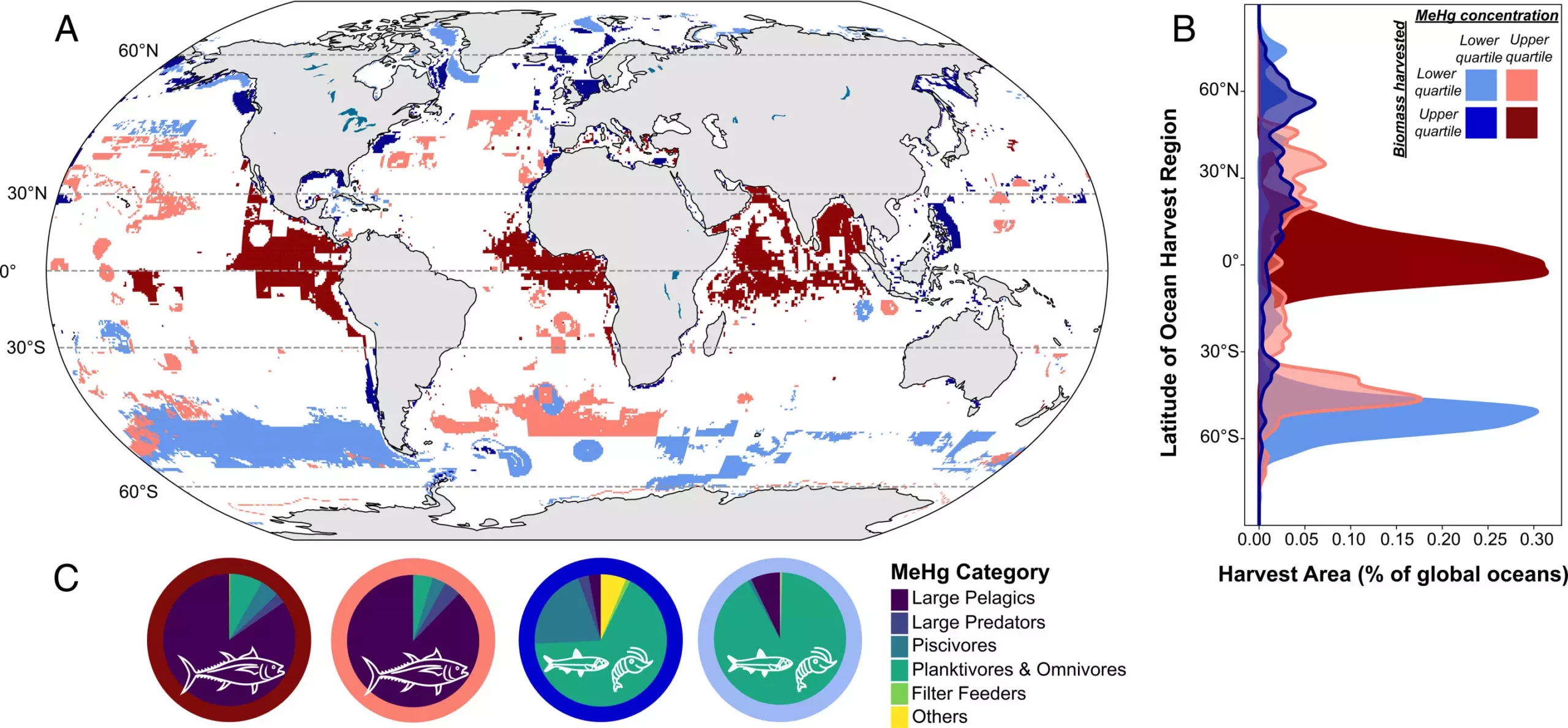Industrial fishing has become synonymous with efficiency and high yield. However, this rise in productivity comes at a high cost, particularly concerning human health. One of the most alarming byproducts of these practices is the increased exposure to methylmercury, a potent neurotoxin linked to significant health issues, particularly in vulnerable populations like children and pregnant women. New research from collaborative efforts involving Harvard University, the University of Delaware, and the University of British Columbia sheds light on the staggering extent of this exposure, revealing that tropical and subtropical fisheries can account for over 70% of all methylmercury sourced from the ocean. This demonstrates a critical intersection of environmental science, public health, and industrial practices that warrants comprehensive scrutiny.
The Economics of Large Pelagic Fish
The seafood market has undergone a dramatic transformation over the last few decades, with large pelagic species like tuna garnering significant consumer demand. This surge can be attributed to advancements in fishing technology, including efficient freezing methods and fish aggregation devices. With these innovations, the availability of species like tuna has boomed, and they have entered mainstream diets around the globe. The reality, however, is that these large fish are often laden with higher levels of methylmercury than smaller species. In essence, while they provide a readily accessible source of protein, they pose significant health risks that are often overlooked.
To grasp the health implications of consuming large pelagic fish, it’s vital to understand the chemistry behind mercury contamination. Mercury enters our atmosphere through various sources, including industrial processes such as coal burning, mining operations, and even natural phenomena like volcanic eruptions. Once released, it precipitates into water bodies where it undergoes a transformation into methylmercury via biological processes. In the warmer climates of tropical and subtropical oceans, this conversion occurs at a heightened rate due to the proliferation of microorganisms that facilitate its accumulation in the marine ecosystem. Through a process known as biomagnification, methylmercury levels increase significantly at higher trophic levels within the food chain, elevating the concentration found in apex predators such as tuna.
The implications of these findings are particularly grave for communities that rely on seafood as a primary source of nutrition. The research indicates that populations engaged in subsistence fishing—those who catch fish for their families or small communities—are disproportionately affected. An alarming estimate suggests that between 84% to 99% of global subsistence fisheries surpass safe methylmercury exposure levels. This poses a stark reality: these communities, already vulnerable due to economic constraints, are ingesting fish that are not only deficient in essential micronutrients but are also loaded with a toxic substance that can lead to severe health complications. It is unsettling to consider that subsistence populations, which contribute least to the pollution problem, are bearing the most significant burden.
In light of these challenges, there is an urgent need to reevaluate and reform industrial fishing practices. While certain species of fish continue to dominate global markets, there are sustainable alternatives available. Smaller pelagic fish like sardines and anchovies, for instance, not only contain significantly lower levels of methylmercury but also boast higher concentrations of omega-3 fatty acids, crucial for overall health. Encouraging the consumption of these smaller fish could mitigate the dangers posed by methylmercury and help restore a more balanced marine ecosystem.
Industrial fishing practices significantly affect both marine environments and public health, underscoring the necessity for immediate intervention. As consumers, it is crucial to remain informed about the origins and safety of seafood. It is equally important for policymakers and industry leaders to implement sustainable fishing regulations that prioritize human health and ecological integrity. The risk posed by methylmercury exposure through industrial fishing poses an incredible dilemma—one that requires a concerted effort from all stakeholders to safeguard the health of both current and future generations. Moving forward, fostering awareness and seeking actionable solutions will be pivotal in addressing this pervasive issue.


Leave a Reply